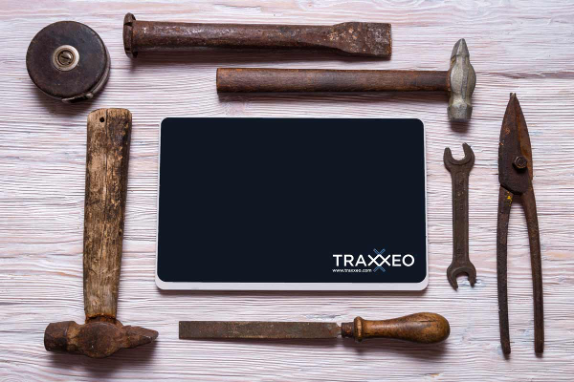
Some might say it is about time, but digital technology is – finally – now being used in the construction industry more and more. There are many benefits to this, such as better budgetary control, higher health and safety standards, and more proactive decision making. In fact, things have progressed to the stage where a construction project manager is currently faced by a huge range and variety of digital tools on offer.
So, the question now is which of these apps and software are the best for managing daily workloads on a construction site in a more efficient way? Here, we will provide a quick guide to what we think are five of the best digital tools available today for a successful construction project manager.
Digital change is coming
While there are some construction companies who are fully embracing the opportunities that moving to a digital world can bring, progress is still disappointingly slow in some areas. According to consultancy firm Roland Berger, in 2016 93% of construction industry players in Germany agreed that digitisation will affect every process in their business and 100% of building materials firms believed they had not yet exhausted their digital potential – but, tellingly, less than 6% of construction companies were making full use of digital planning tools.
As with any significant change, there are inevitable barriers to digitisation, some of which are real and some imagined. These might include the fear of creating more work during integration, a belief that the digital tools are too complex, the feeling that the construction industry is too risk-averse and failing to appreciate the actual return on investment of digital tools, not just the time saved.
However, these so-called barriers can often be overcome relatively easily or possibly don’t actually exist in reality. So, everything seems to be moving in a digital direction – it’s just a case of if, or when, the construction sector will catch up.
5 great tools for construction project management
Once it has been decided to look towards the future and follow a digital path, it soon becomes clear that there is a multitude of tools available to improve ways of working and boost efficiency. To help with this, we have listed some of our favourites below.
1. Archisnapper: This is a snagging tool for use on-site, designed to save time on inspections, site reports and follow-ups. It is aimed at architects, engineers, contractors and safety professionals. With it, you can record issues directly on-site and automatically create snag/punch lists, which can be shared easily with others. The ability to incorporate photos and drawings will significantly increase the level of detail in a report, making it much more useful for decision making. Paper checklists can be converted into digital inspection forms, meaning no more chasing dropped sheets of paper across the site when it’s windy.
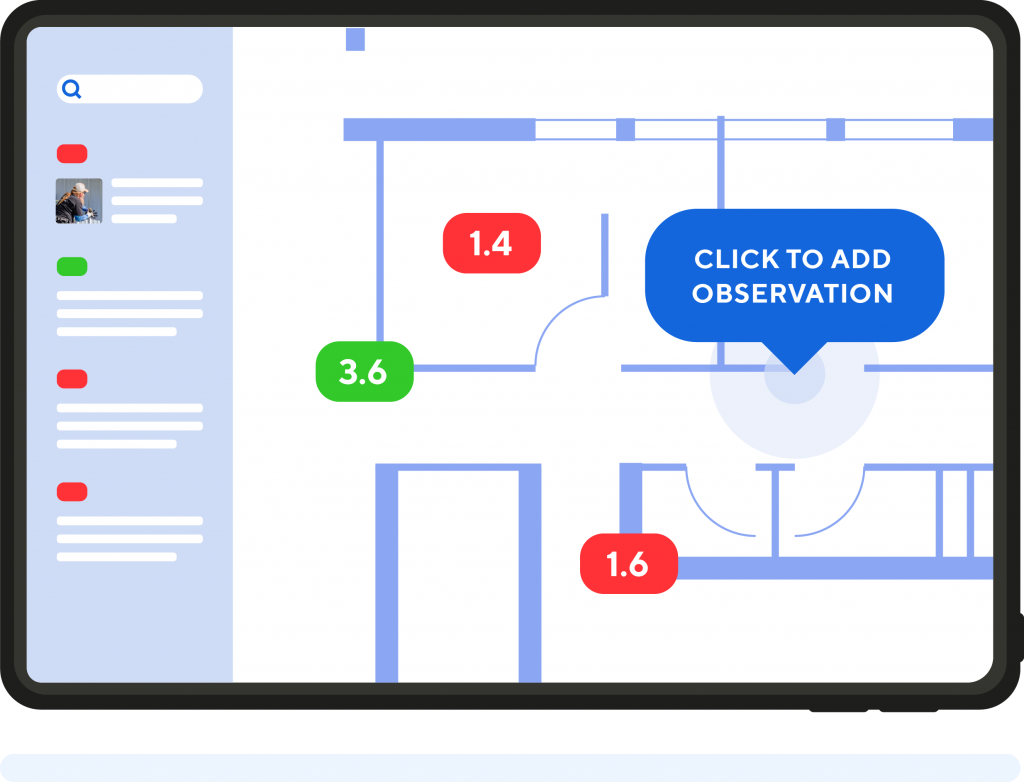
2. LetsBuild planning: A great real-time planning tool for project managers. This allows you to import your project plan into a real-time dynamic environment. The schedule then gets updated with data directly from site and therefore chasing people with phone calls and messages becomes a thing of the past. It is designed to operate alongside other planning tools, such as Asta Powerproject, MS Project and Primavera, so that integration with existing systems is a simple process. You are able to filter out any data that isn’t required, which prevents information overload and allows you to focus on what is most important to you.
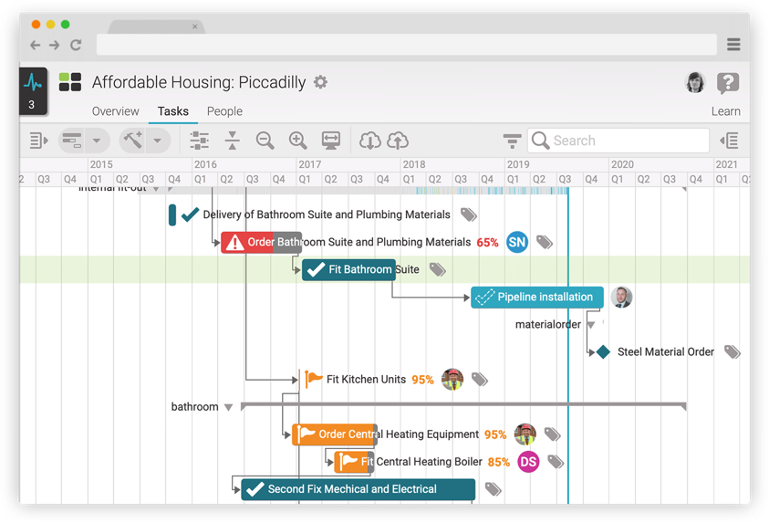
(source: https://www.letsbuild.com/progress-planning/schedule)
3. FieldChat: With this instant messaging app built for contractors and subcontractors, communications are centralised, organised and searchable. Traditional texting and group chats can sometimes bombard teams with too much information. But with FieldChat, conversations can be kept relevant and manageable by organising them into channels, with users only given access to the channels they need. For really important announcements, the site broadcasts function can be used. The app permits access to project directories and allows you to upload photos into your construction management software.
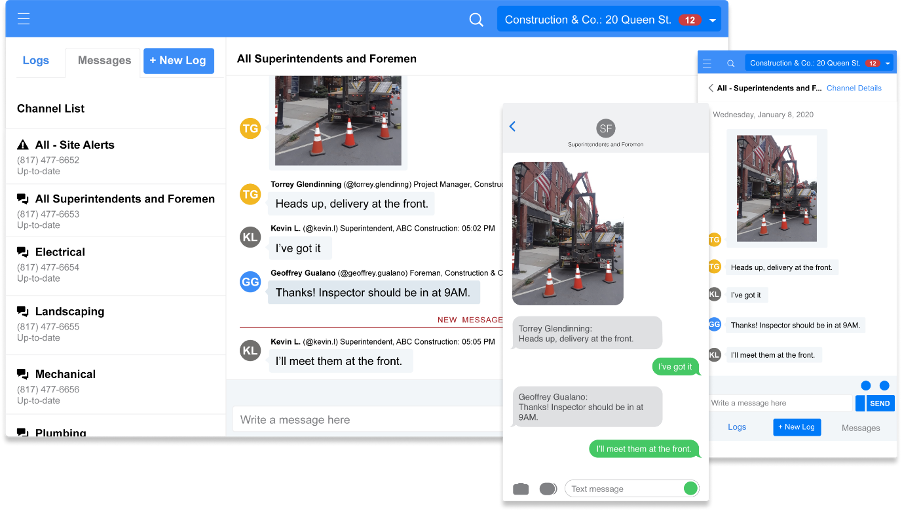
4. Traxxeo: Here at Traxxeo, we offer a range of digital tools that are designed to make the life of a construction site project manager much easier by allowing better management and control of resources. These tools include:
- Digital timesheets – Workers can easily record their jobs, work hours, leave, absence and other information required by payroll, which enables live and integrated data tracking.
- Attendance monitoring – In real-time, you can manage the accreditations, driving permits, health and safety training, and other documentation of your workers and sub-contractors that are required to ensure their administrative compliance with regulations. This will make sure that only the people who are allowed to be there are on-site.
- Resource planning – By using this integrated planning tool, you have the ability to manage, adjust and optimise your various mobile resources (e.g. work orders, teams, sites, vehicles, machines) according to the needs and priorities of your different sites.
- Absence planning – Primarily for HR teams, this tool helps you to manage all types of absence by field personnel and ensure efficient planning and full transparency for the whole organisation.
- Equipment management – This lets you track the transfer of responsibility for tools, as well as their geolocation, through the use of mobile applications and Bluetooth Low Energy (BLE) chips. This enables the optimal management of tools and equipment to avoid losses and make your teams accountable.
- Geolocation – The use of connected objects and telemetry equipment allows continuous oversight of the journeys of your vehicles and the people who use them. This brings many benefits, such as automatically generating optimal vehicle maintenance schedules and analysing vehicle itineraries to identify waiting times and attendance at locations.
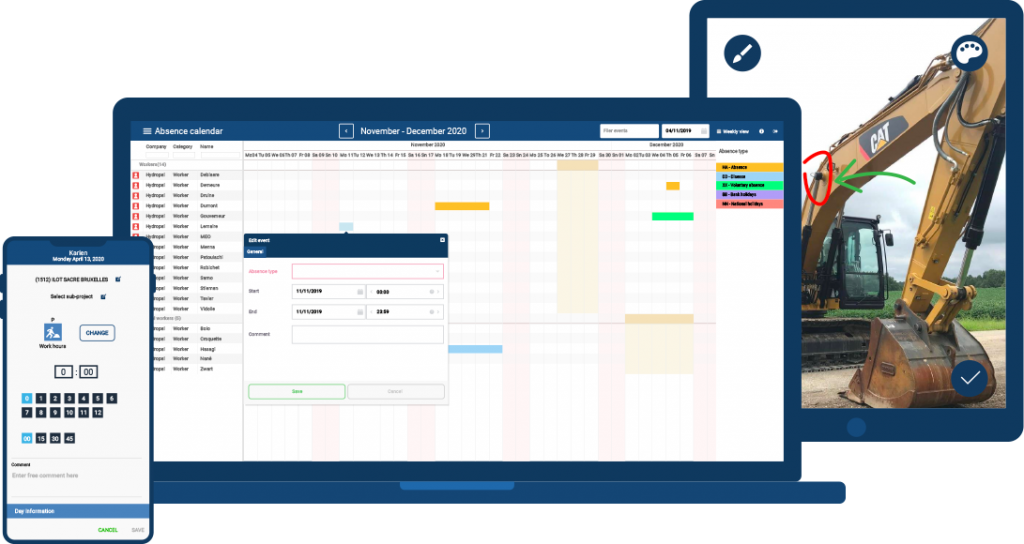
5. Autodesk BIM 360: This is a unified platform connecting your project teams and data in real-time, from design through to construction. The aim is to predict safety hazards, proactively manage quality, automate tasks and reduce rework so that you can control costs and stay on schedule. What more could a project manager ask for?
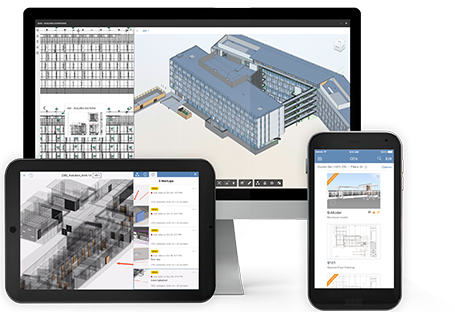
The future is coming
While we think the five tools mentioned above are great, this list is by no means exhaustive. There are lots of other great tools available out there to help a project manager move into the next phase of implementing digital technology on-site.
Nevertheless, this situation should be seen in a positive light, rather than being overwhelmed by the wide variety of options available. The specific needs of each project can differ markedly from site to site and from time to time, and therefore the digital tools that are perfect for one job might not suit a different one. But it should be possible now to find exactly the right digital tool that you’re after. The benefits to be gained are substantial and can make a huge difference to the future competitiveness and success of your company.